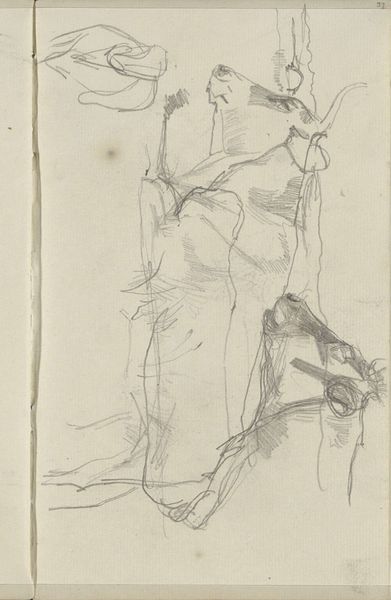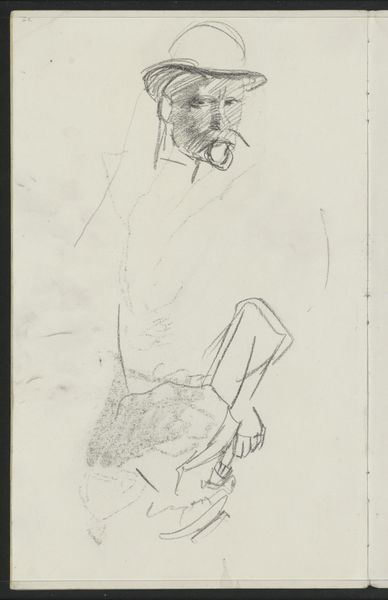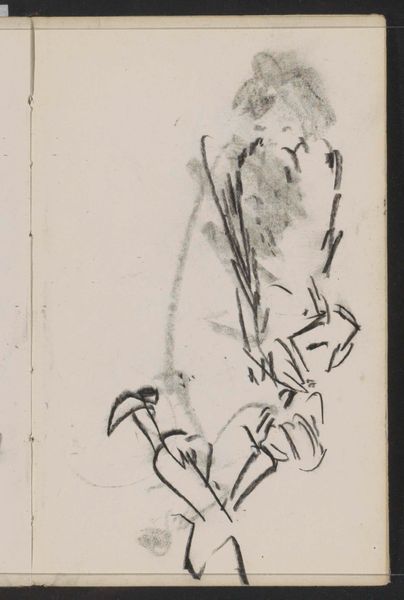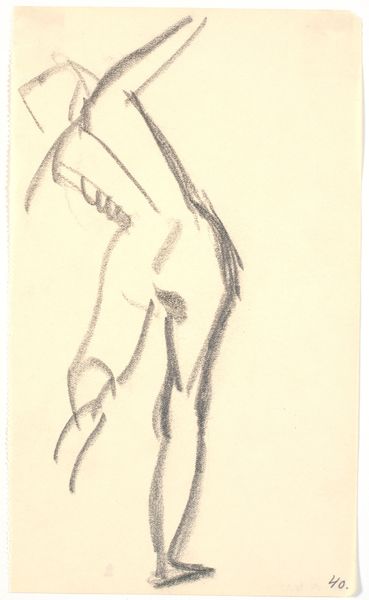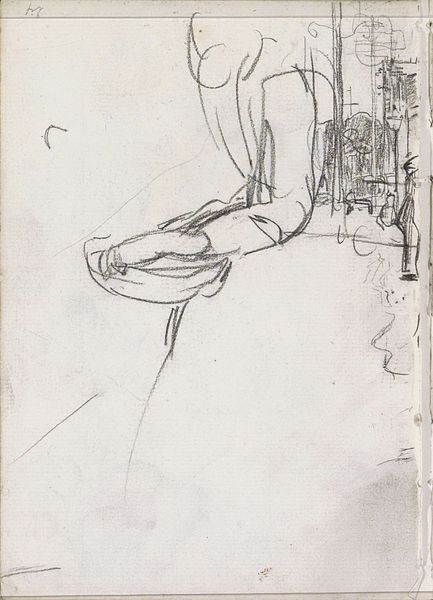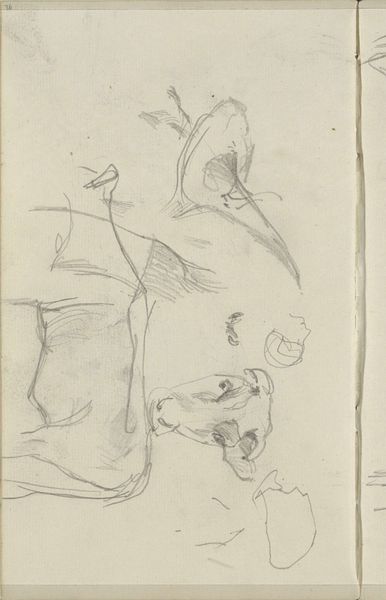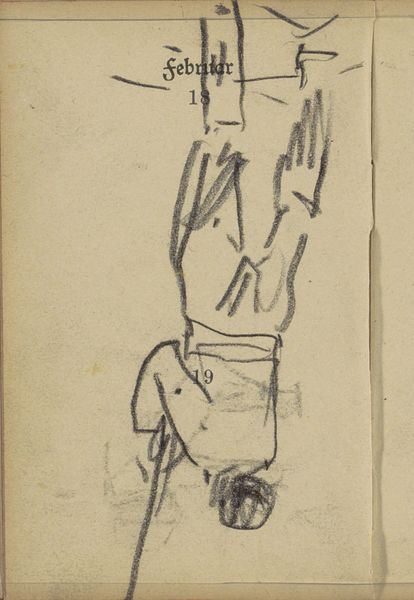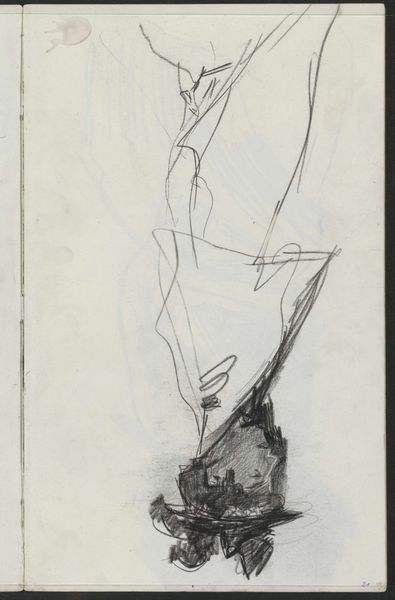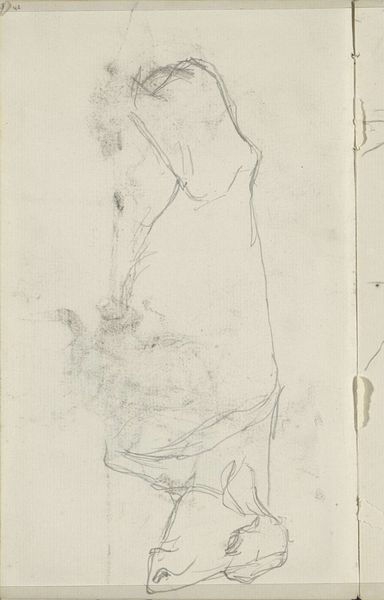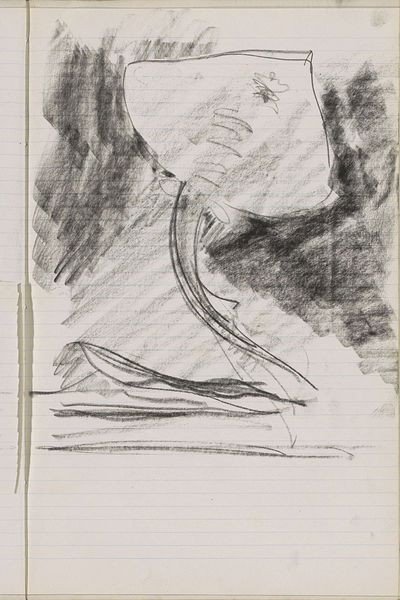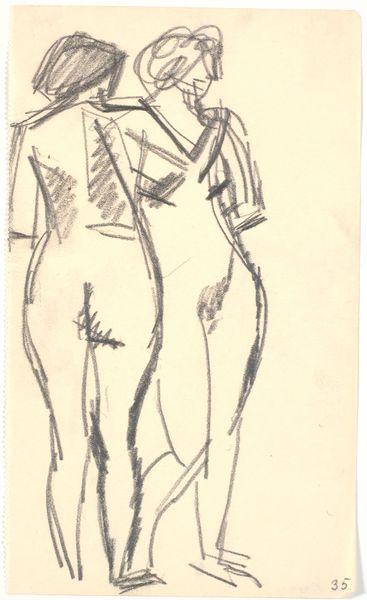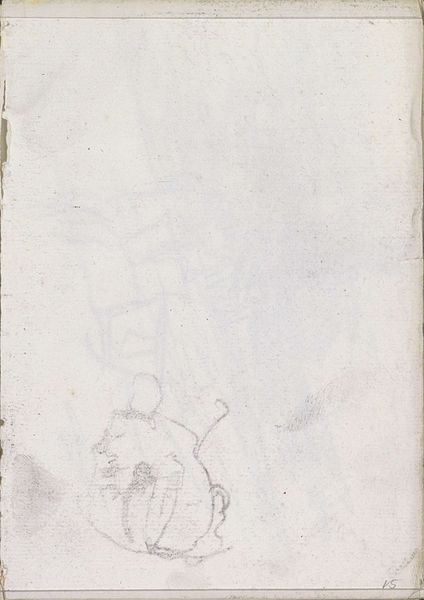
#
amateur sketch
#
light pencil work
#
pencil sketch
#
incomplete sketchy
#
personal sketchbook
#
ink drawing experimentation
#
sketchbook drawing
#
pencil work
#
sketchbook art
#
initial sketch
Copyright: Rijks Museum: Open Domain
Curator: Here we have “Abklatsch van de krijttekening op pagina 21,” a chalk drawing transfer from approximately 1875 to 1934 by Isaac Israels, currently held in the Rijksmuseum collection. It appears to be a preliminary sketch, almost ephemeral in its lightness. Editor: Ephemeral indeed. My eye is immediately drawn to the way the light pencil work renders the subject barely present, like a ghost of an image. You can almost feel the hand moving across the page, feeling out the form. What material can conjure such an effect? Curator: It’s interesting to consider this piece within the broader context of Israels' oeuvre. While celebrated for his vibrant paintings of modern life, this sketch offers a glimpse into his more private, experimental practice. The act of sketching was deeply connected to the 19th-century rise of plein air painting, which enabled a broader popular awareness through more direct encounters with the subject and material conditions of painting and its making. Editor: And those material conditions certainly leave their mark. I am particularly intrigued by the medium of chalk transfer—what kind of labor was involved? And what was he hoping to capture? We see these smudges, light forms... it almost looks like an early photographic print that hasn’t fully developed. Curator: I see what you mean. This method could allow for easy reproduction and adjustment of the composition; and maybe also speaks to a wider interest in mechanical forms of representation, and it raises questions about authenticity, intention, and labor in art-making. Its existence prompts interesting questions about its purpose, given the proliferation of the printing press. Editor: Precisely. I’m drawn to the apparent immediacy implied by a sketchbook, while simultaneously struck by the level of care invested. Was the sketch planned, or a momentary impression? Did he believe this sketchbook might ever enter the public eye? Curator: Perhaps he valued the creative journey itself. Though a seemingly insignificant page, this sketchbook offers us intimate access to a crucial historical transformation that painting practices underwent as art became accessible. Editor: I'm left pondering the role of craft and experimentation in Israels’ work. Curator: And I'm considering how private practice intersects with larger trends and accessibility in the art world.
Comments
No comments
Be the first to comment and join the conversation on the ultimate creative platform.
